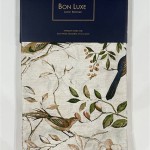Blinds Or Curtains For Sliding Glass Doors: A Comprehensive Guide
Sliding glass doors are a common architectural feature, providing access to patios, decks, and balconies while allowing ample natural light to enter a home. However, these expansive openings also present challenges related to privacy, light control, insulation, and aesthetics. Choosing the appropriate window treatment for sliding glass doors involves careful consideration of various factors, including functionality, style, maintenance, and budget. Blinds and curtains are two primary options, each offering unique advantages and disadvantages.
This article provides a comprehensive overview of blinds and curtains as window treatments for sliding glass doors, exploring their features, benefits, and drawbacks to facilitate informed decision-making. It will examine various types of blinds and curtains, discuss their suitability for different needs and preferences, and offer guidance on selecting the optimal window covering for a particular space.
Understanding the Functionality Requirements
Before evaluating specific types of blinds and curtains, it is essential to define the functional requirements of the window treatment. These requirements typically include light control, privacy, insulation, and ease of operation.
Light Control: The ability to regulate the amount of natural light entering a room is a primary consideration. Different window treatments offer varying degrees of light control, from complete blackout to filtered light. Blinds, with their adjustable slats, provide precise control over light, allowing users to direct light upwards, downwards, or close it off completely. Curtains, on the other hand, offer more general light control. Sheer curtains allow diffused light to pass through, while heavier, lined curtains can block out most light.
Privacy: Maintaining privacy is often a crucial concern, especially for sliding glass doors that face neighboring properties or busy streets. Blinds offer good privacy when the slats are closed, although some light may still seep through between the slats. Curtains provide consistent privacy when drawn, with thicker fabrics ensuring greater opacity. Blackout curtains offer the highest level of privacy.
Insulation: Sliding glass doors can be a significant source of heat loss in winter and heat gain in summer. Window treatments can provide an additional layer of insulation, helping to regulate indoor temperatures and reduce energy consumption. Blinds offer some insulation by trapping air between the slats and the glass. However, curtains, especially those made from thick, insulated fabrics, offer significantly better thermal performance. Layering curtains, such as combining sheer curtains with heavier drapes, can further enhance insulation.
Ease of Operation: The ease with which a window treatment can be opened and closed is another important factor. Blinds typically operate via a wand or cord, allowing users to easily tilt the slats or raise and lower the entire blind. Curtains are typically operated by drawing them along a track or rod. The ease of operation depends on the weight of the fabric, the quality of the track or rod, and the smoothness of the operating mechanism. Motorized options are available for both blinds and curtains, offering the ultimate in convenience and control.
Exploring Blind Options for Sliding Glass Doors
Several types of blinds are suitable for sliding glass doors, each with its own characteristics and advantages. These include vertical blinds, horizontal blinds (specifically wider slat versions), panel track blinds, and cellular shades (also known as honeycomb blinds).
Vertical Blinds: Vertical blinds are a classic choice for sliding glass doors due to their orientation, which complements the vertical lines of the door. They consist of long, vertical slats that hang from a track and can be rotated to control light and privacy. Vertical blinds are available in various materials, including vinyl, fabric, and wood. Vinyl vertical blinds are durable, easy to clean, and resistant to moisture, making them a practical choice for high-traffic areas. Fabric vertical blinds offer a softer, more decorative look and can be treated to resist stains and fading. Wood vertical blinds provide a warm, natural aesthetic but require more maintenance and are not suitable for humid environments.
Horizontal Blinds (Wide Slat): While traditionally used for windows, horizontal blinds with wider slats (typically 2-3 inches) can be adapted for sliding glass doors. This requires a wider blind and a robust mounting system. They operate similarly to vertical blinds, with slats that can be tilted to control light and privacy. They are available in aluminum, wood, and faux wood. Faux wood blinds are a popular choice for their durability and resistance to moisture, making them suitable for kitchens and bathrooms. Wood blinds offer a more upscale look but require careful maintenance.
Panel Track Blinds: Panel track blinds consist of wide panels of fabric that slide horizontally along a track. They offer a clean, contemporary look and are particularly well-suited for large sliding glass doors. Panel track blinds can be made from various fabrics, including sheer, light-filtering, and blackout materials. They offer good light control and privacy, depending on the fabric chosen. They are easy to operate and can be stacked neatly to one side when open.
Cellular Shades (Honeycomb Blinds): Cellular shades, also known as honeycomb blinds, are characterized by their unique cellular structure, which traps air and provides excellent insulation. They are available in both vertical and horizontal orientations, with vertical cellular shades being a common choice for sliding glass doors. Cellular shades are lightweight, easy to operate, and available in a wide range of colors and fabrics. They offer good light control and privacy, and their insulating properties can help reduce energy consumption.
Exploring Curtain Options for Sliding Glass Doors
Curtains offer a wide range of styles, fabrics, and designs, providing considerable flexibility in terms of aesthetics and functionality. Common curtain options for sliding glass doors include traditional curtains, grommet curtains, and sliding panel curtains.
Traditional Curtains: Traditional curtains are typically hung from a rod using rings or hooks. They can be made from various fabrics, including sheer, light-filtering, and blackout materials. The choice of fabric will determine the level of light control, privacy, and insulation provided. Traditional curtains offer a classic, elegant look and can be easily customized to match any décor. They can be layered to create different effects, such as combining sheer curtains with heavier drapes. The fullness of the curtains, which refers to the amount of fabric used relative to the width of the window, will also affect their appearance and performance. Fuller curtains provide better insulation and light control.
Grommet Curtains: Grommet curtains feature metal rings (grommets) sewn into the top of the fabric, which slide directly onto the curtain rod. This creates a clean, modern look and allows the curtains to hang in even, uniform folds. Grommet curtains are easy to install and operate and are available in a wide range of fabrics and styles. They are a popular choice for their simplicity and versatility.
Sliding Panel Curtains: Sliding panel curtains, similar to panel track blinds, consist of wide panels of fabric that slide horizontally along a track. However, unlike panel track blinds, these panels are typically made from heavier, more luxurious fabrics, giving them a more curtain-like appearance. Sliding panel curtains offer a sophisticated, contemporary look and are well-suited for large sliding glass doors. They provide good light control and privacy, depending on the fabric chosen, and can be stacked neatly to one side when open.
Key Considerations When Choosing Between Blinds and Curtains
The choice between blinds and curtains ultimately depends on individual needs and preferences. However, several key considerations can help guide the decision-making process. These considerations include style preferences, budget constraints, maintenance requirements, and specific functional needs.
Style Preferences: Blinds tend to offer a more modern, minimalist look, while curtains can provide a more traditional, elegant, or bohemian aesthetic. The choice between the two will depend on the overall style of the room and the desired ambiance. If a clean, uncluttered look is desired, blinds may be the better option. If a softer, more textured look is preferred, curtains may be more suitable. Combining blinds and curtains, such as layering sheer curtains over blinds, can also create a unique and stylish look.
Budget Constraints: The cost of blinds and curtains can vary significantly depending on the materials, style, and features chosen. Blinds are generally less expensive than curtains, especially for basic models. However, custom-made blinds or blinds with specialized features, such as motorization, can be quite costly. Curtains can also range in price, with simple, unlined curtains being relatively inexpensive and custom-made, lined curtains made from high-end fabrics being significantly more expensive. It is important to establish a budget before beginning the selection process and to compare prices from different retailers and manufacturers.
Maintenance Requirements: Blinds and curtains require different levels of maintenance. Blinds need to be dusted or wiped clean regularly to prevent dust buildup. Vertical blinds and horizontal blinds are generally easy to clean, although some types of blinds, such as wood blinds, may require special cleaning products. Curtains require more maintenance than blinds. They need to be vacuumed regularly to remove dust and dirt and may need to be professionally cleaned periodically. The frequency of cleaning will depend on the fabric and the environment. Curtains made from delicate fabrics may require more frequent and careful cleaning.
Specific Functional Needs: Consider the specific functional needs of the space when choosing between blinds and curtains. If maximum light control and privacy are required, blackout curtains or blinds with opaque slats may be the best option. If insulation is a primary concern, insulated curtains or cellular shades may be more suitable. If ease of operation is important, motorized blinds or curtains may be the preferred choice. It is also important to consider the size and shape of the sliding glass door when selecting a window treatment. Larger doors may require heavier-duty blinds or curtains, while unusually shaped doors may require custom-made solutions.
Ultimately, the optimal choice between blinds and curtains for sliding glass doors is a personalized decision that should be based on a careful assessment of functional requirements, style preferences, budget constraints, and maintenance considerations. By carefully evaluating these factors, homeowners can select a window treatment that enhances the beauty and functionality of their space.

8 Best Sliding Glass Door Curtain Ideas The Shade

Are Curtains Or Blinds Better For Sliding Doors Amanda Katherine Interiors

Are Curtains Or Blinds Better For Sliding Doors Amanda Katherine Interiors

Door Blinds For Sliding Glass Doors French

8 Best Sliding Glass Door Curtain Ideas The Shade

Curtains For Sliding Doors Our Top 5 Ideas U Blinds Australia

Choosing The Right Patio Door Treatments Pella Windows Doors

Window Treatments For Patio And Sliding Glass Doors Blind Richardson Tx

Blinds For Sliding Doors San Antonio Window Coverings

Are Curtains Or Blinds Better For Sliding Doors 2024 Guide








